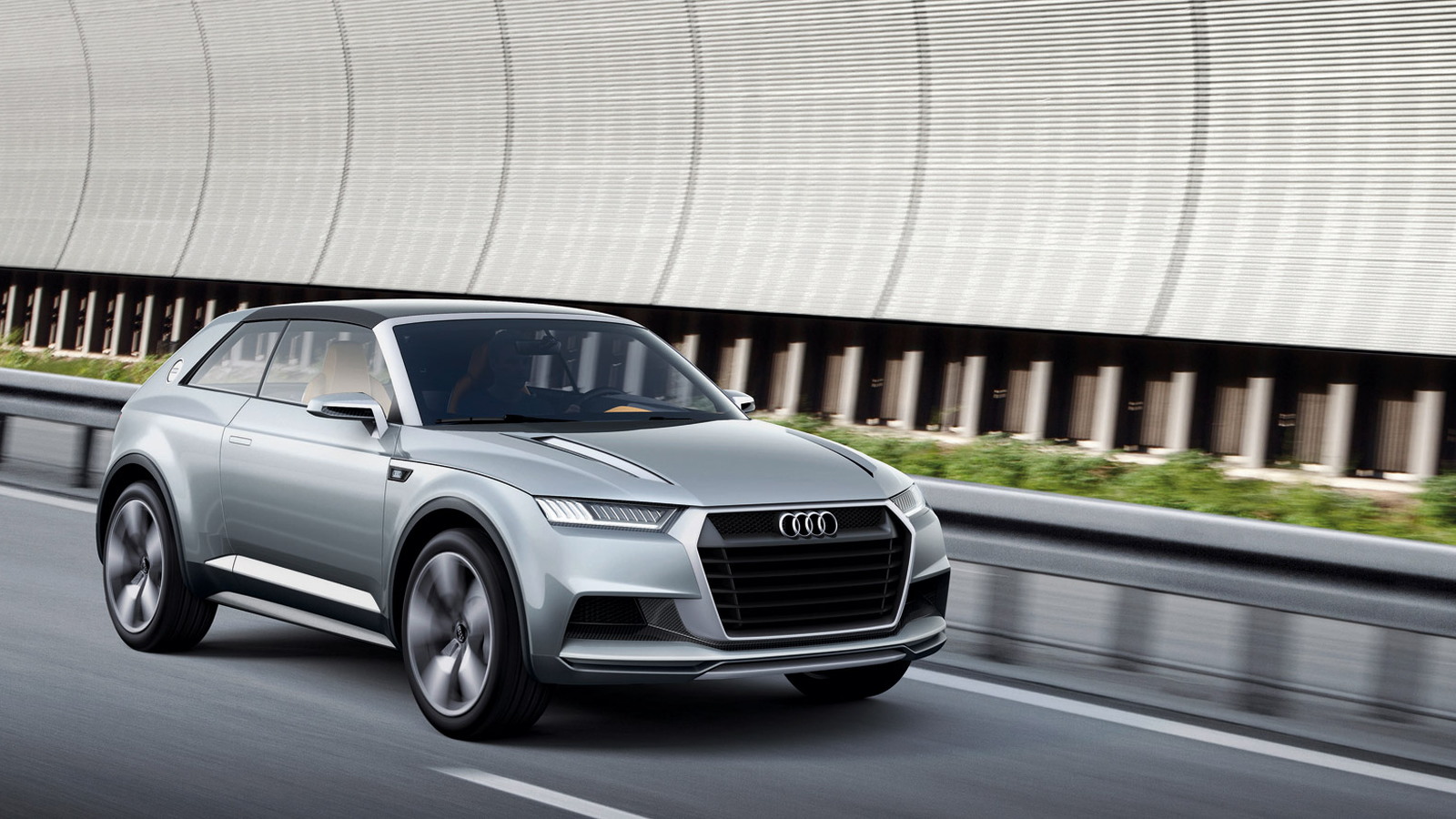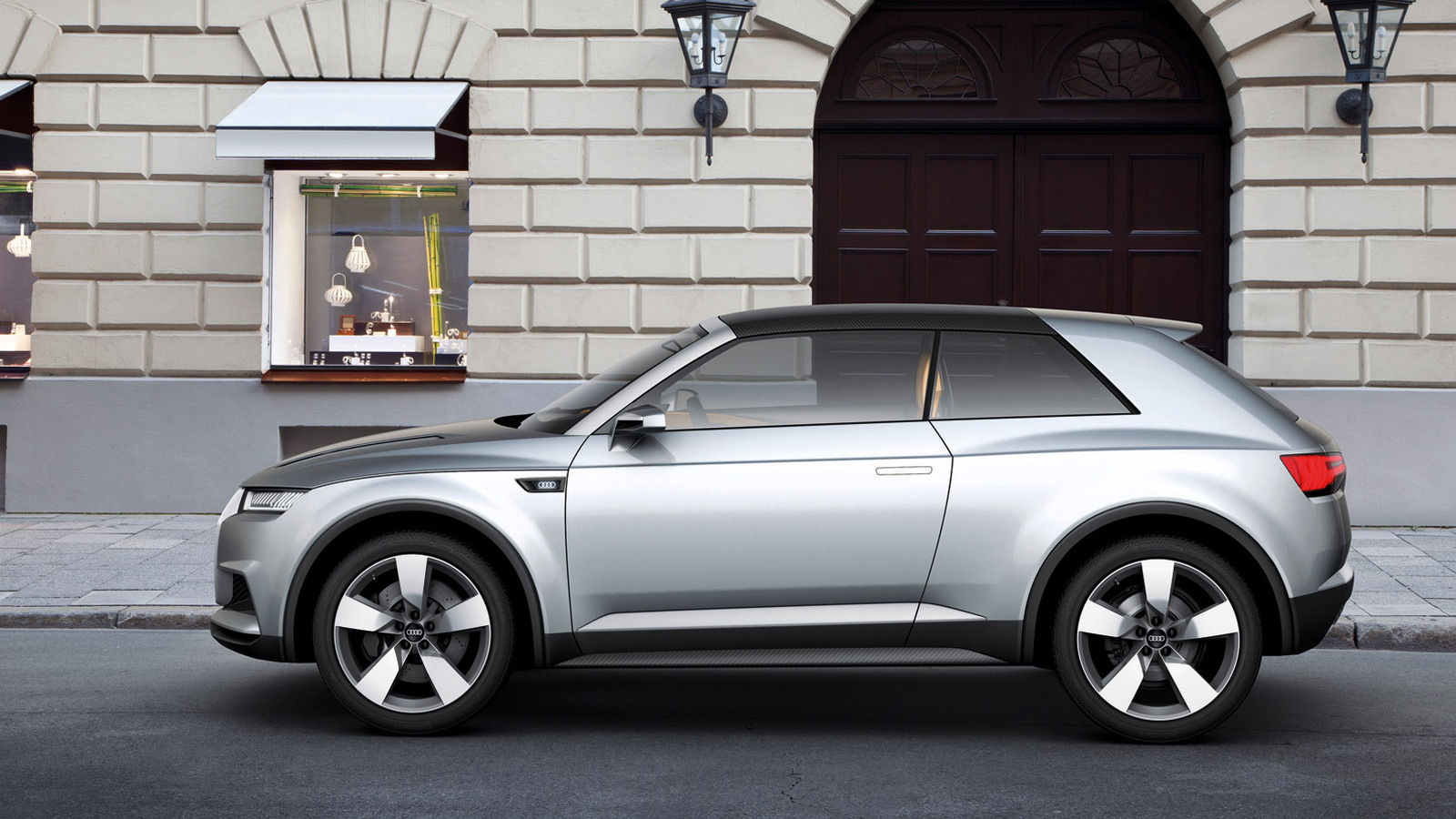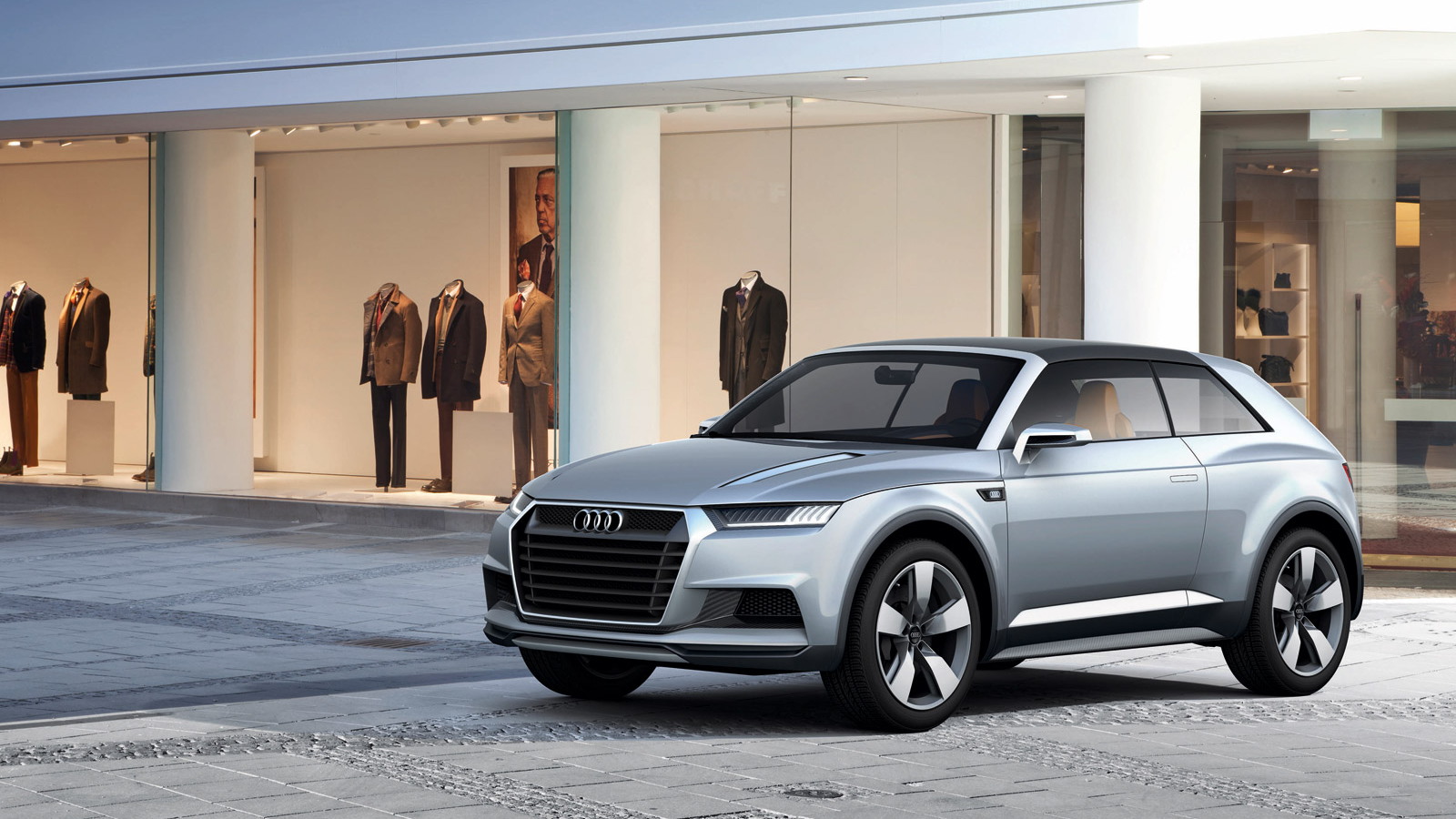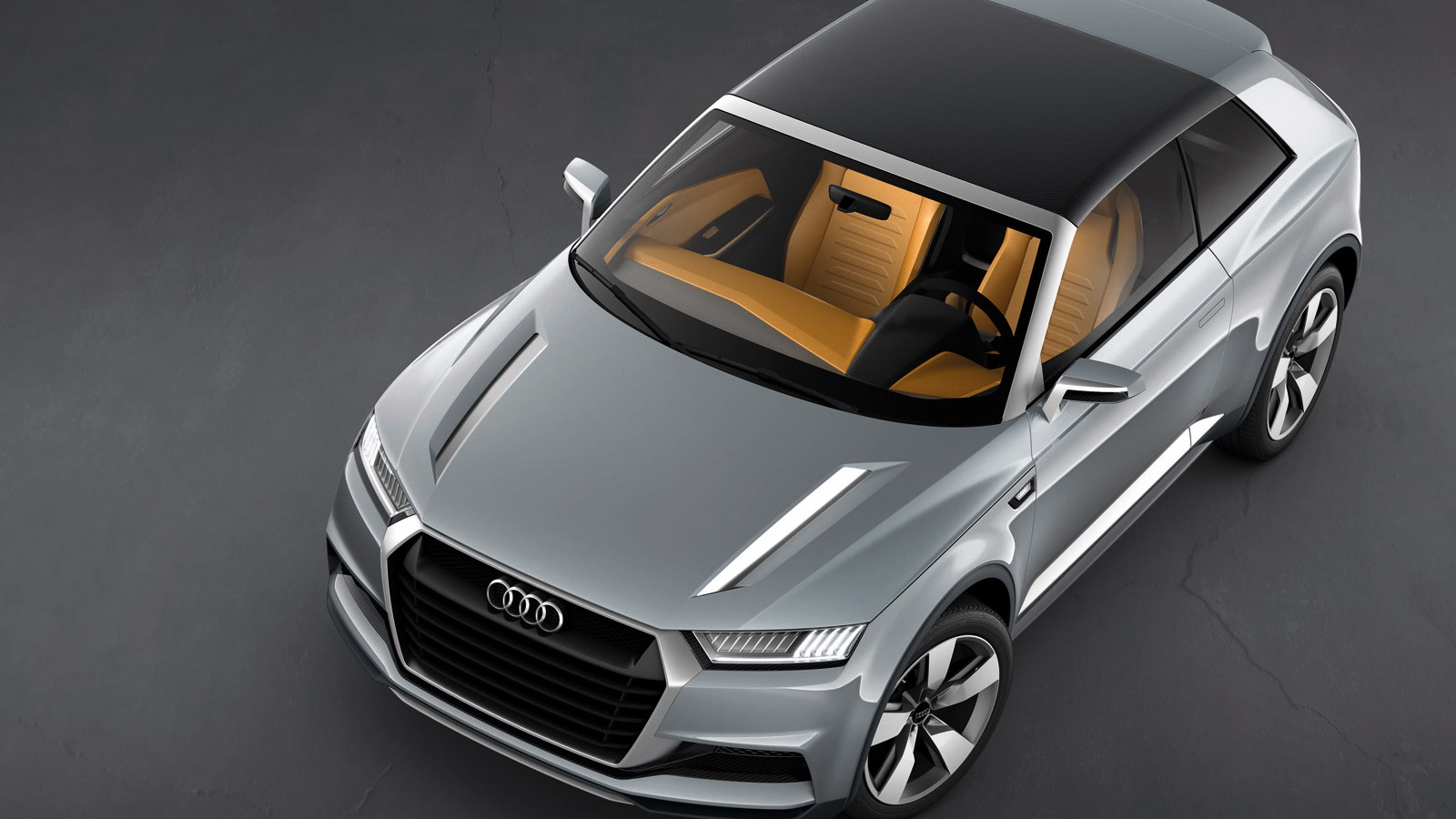While smaller than the current Q3 in size, the Q2 will also carry off a coupe-like roofline, although production versions are expected to come with five doors. Audi says it’s an entirely new fusion of technology, engineering and design, and provides pointers to the design language of the brand’s future Q models.
Underneath the Crosslane (and, presumably, the Q2) lies a ‘multi-material’ spaceframe, made light through Audi ultra principles. The core materials include aluminum, carbon fiber and fiberglass. The concept has an unladen weight of just over 3,000 pounds, which is rather impressive when you consider this is a plug-in hybrid packing a combustion engine, two electric motors and lithium-ion batteries. The vehicle is also a convertible, as you can completely remove the roof panel.
The main structure is aluminum, while the front and rear crash structures, as well as supporting structures inside the occupant cell, are made from carbon. Fiberglass, with carbon reinforcements, completes the structure. Audi says the structure offers similar weight and strength advantages as a full carbon fiber monocoque, but at a much lower cost.
Audi is convinced that the highly integrated multi-material spaceframe is the right path to the future. In fact, we’re likely to see it first in the replacements for the Audi R8 and Lamborghini Gallardo supercars.
The drive system of the Crosslane is Audi’s new Dual-Mode Hybrid, which offers hybrid or electric modes. The setup consists of a turbocharged 1.5-liter three-cylinder engine working in tandem with a pair of electric motors.
The dual-mode hybrid concept enables different operating modes. For speeds up to 34 mph, drive comes solely from a single electric motor, though the internal combustion engine can power an alternator-generator which tops up the batteries on the move. At speeds above 34 mph, but below 80 mph, the engine and electric motor work together, with the engine only coming online as required. The final mode, for speeds above 80 mph, the engine does most of the work, with the electric motor adding extra thrust. Audi says that with a full charge of the batteries, fuel economy can reach in excess of 200 mpg.
Assuming the Q2 gets the green light for production, it may or may not offer the same advanced drivetrain. If it is produced, expect more conventional internal-combustion engine options (in both gas and diesel variants) to be offered as well.





